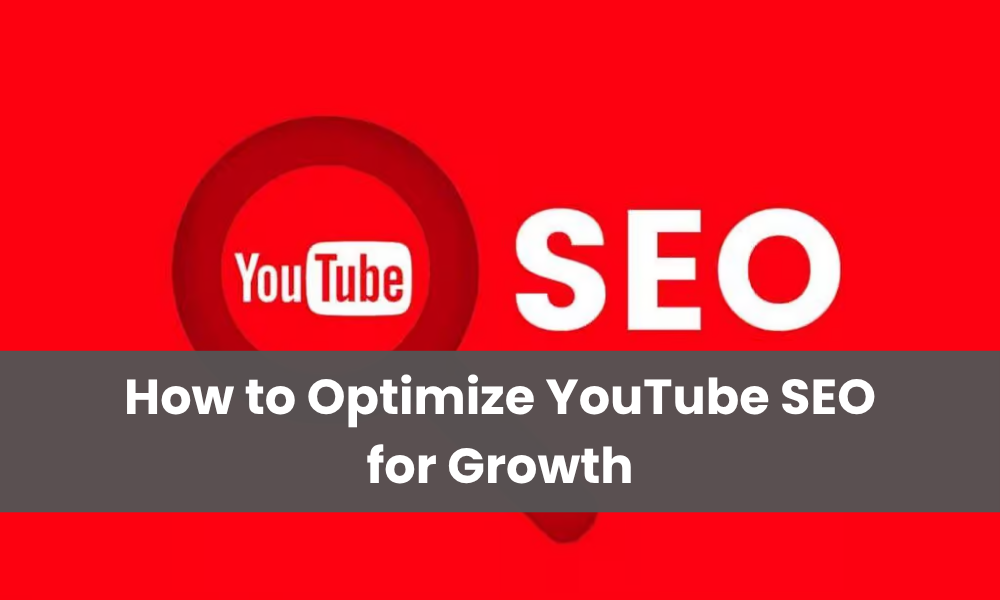YouTube has become more than a place to watch videos as it is a search engine on its own. Millions of videos go live every day, but only a small fraction actually get noticed. That’s where How to Optimize YouTube SEO comes in. The right strategy helps videos show up in search, gain more views, and build a lasting audience. Without SEO, even good content can stay buried.
Understanding YouTube SEO Basics
At its core, video SEO optimization is about making content easier to find. Titles, descriptions, tags, and thumbnails all play a role. But beyond that, YouTube looks at watch time, engagement, and how well videos match search intent. A strong video SEO strategy mixes creativity with technical know-how. If a channel is struggling to grow, professional help can make a difference. Services like Web Design Indianapolis can build a stronger online presence that supports video content.How to Optimize YouTube Videos Step by Step
Many creators wonder how to optimize YouTube videos effectively. It starts with keyword research to learn what viewers are searching for. Titles should include those terms naturally, while descriptions give context. Closed captions and transcripts also boost visibility.But optimization doesn’t stop at publishing. Regular updates and testing thumbnails or titles can change results over time. For brands or businesses, a partner like Shopify Development Indianapolis can connect video content with e-commerce strategies.Improving Video SEO Based on Analytics
Numbers don’t lie. Analytics reveal what works and what doesn’t. Improving video SEO based on analytics means checking audience retention, click-through rate, and traffic sources. If people drop off early, maybe the intro needs fixing.If search brings most views, then optimizing around keywords matters even more. This process is ongoing. Every upload teaches something new. For deeper strategies, some turn to WordPress development agency Indianapolis to align website content with video performance.Building an Effective Video SEO Strategy
Success on YouTube doesn’t happen by chance. An effective video SEO checklist includes:- Using keywords in the first 60 characters of titles.
- Writing detailed but clear descriptions.
- Adding engaging thumbnails.
- Encouraging likes, comments, and shares.
Video SEO Marketing for Business Growth
For brands, YouTube isn’t just about views. It is more about trust and visibility. Video SEO marketing ensures videos reach the right audience, support brand goals, and drive traffic to websites or stores. When done right, it becomes a steady growth engine.Companies exploring AI-driven tools are also testing smarter ways to optimize. AI Agent Development is opening new paths to manage video campaigns with data-backed insights.Conclusion: Turning Videos Into Discoverable Assets
Knowing How to Optimize YouTube SEO turns videos into more than just content, because it turns them into discoverable assets. Every detail matters: keywords, analytics, engagement, and strategy. With steady effort, videos reach more people, build authority, and support bigger goals. Ready to grow faster? Partnering with experts like Savors Marketing can bring the strategy and tools needed to scale results.FAQs
- What is YouTube SEO? It’s the process of making videos rank higher in YouTube and Google search results through titles, descriptions, tags, and engagement.
- How long does YouTube SEO take to show results? It depends. Some videos gain traction in weeks, while others take months. Consistency plays a big role.
- Do thumbnails matter for SEO? Yes. A strong thumbnail increases clicks, which tells YouTube the video is worth showing.
- Can small channels benefit from SEO? Absolutely. Even new creators can grow faster with a smart video SEO strategy.
- What’s better: keywords in tags or descriptions? Descriptions carry more weight. Tags help, but they’re less important than before.


